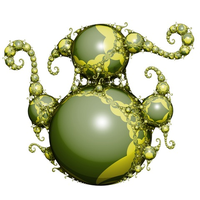The study of discrete subgroups of semisimple Lie groups is a field with a long history and, at same time, a very active topic of research. It is at the core of several fields, ranging from differential geometry to number theory and since Margulis's breakthrough in the 70's, it is intimately related with dynamical systems.
While the subsequent developments account for rigidity phenomena, our program will be focused on geometric aspects of flexible discrete groups.
The flexible side of the theory is rooted in the Ehresmann--Thurston principle, which establishes a correspondence between deformations of a discrete group and deformations of associated geometric manifolds.
This principle was at the heart of the exploration, after Thurston, of infinite volume hyperbolic $3$-manifolds, how they deform and how they can be glued to build closed hyperbolic manifolds.
Thurston's program leads more generally to investigate, for a semi-simple Lie group $\sf G$ of the non-compact type:
- the geometry of (infinite co-volume) locally symmetric spaces $\Gamma\backslash \sf G/\sf K$,
- domains of discontinuity of $\Gamma$ on homogeneous spaces of $\sf G$, such as flag manifolds, their associated geometry and dynamics,
- the global geometry/topology of the character variety $\mathfrak X(\Gamma,\sf G)=\hom(\Gamma,\sf G)/\sf G$ together with the modular action of $\mathrm{Out}(\Gamma)$.
For several decades, however, the investigation of flexible/infinite co-volume discrete subgroups was mostly confined to low dimensions and specially to rank $1$.
For higher-rank Lie groups, the lack of a hands-on stable class of discrete subgroups has long delayed a unified approach to the subject. The discovery, some twenty years ago, of the notion of Anosov group by Labourie, has partly filled this gap and open a very active research field.
Continuing this trend, our scientific program intends to develop further the study of higher rank discrete groups by bringing together researchers with different expertises.
-
(Relative) Anosov representations
-
Low-dimensional geometry and topology
-
Higgs bundles
-
Higher Rank Teichmüller Theory

